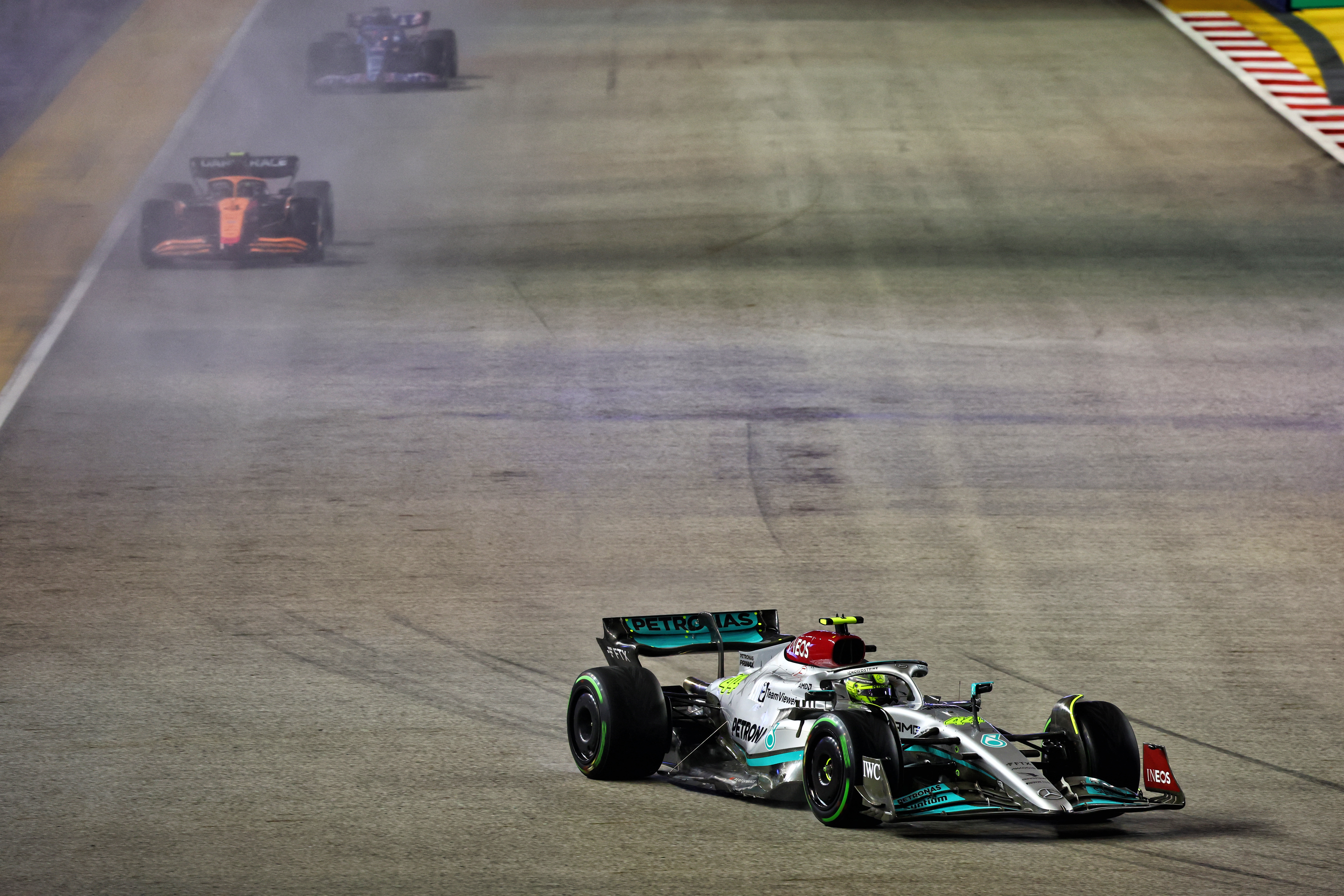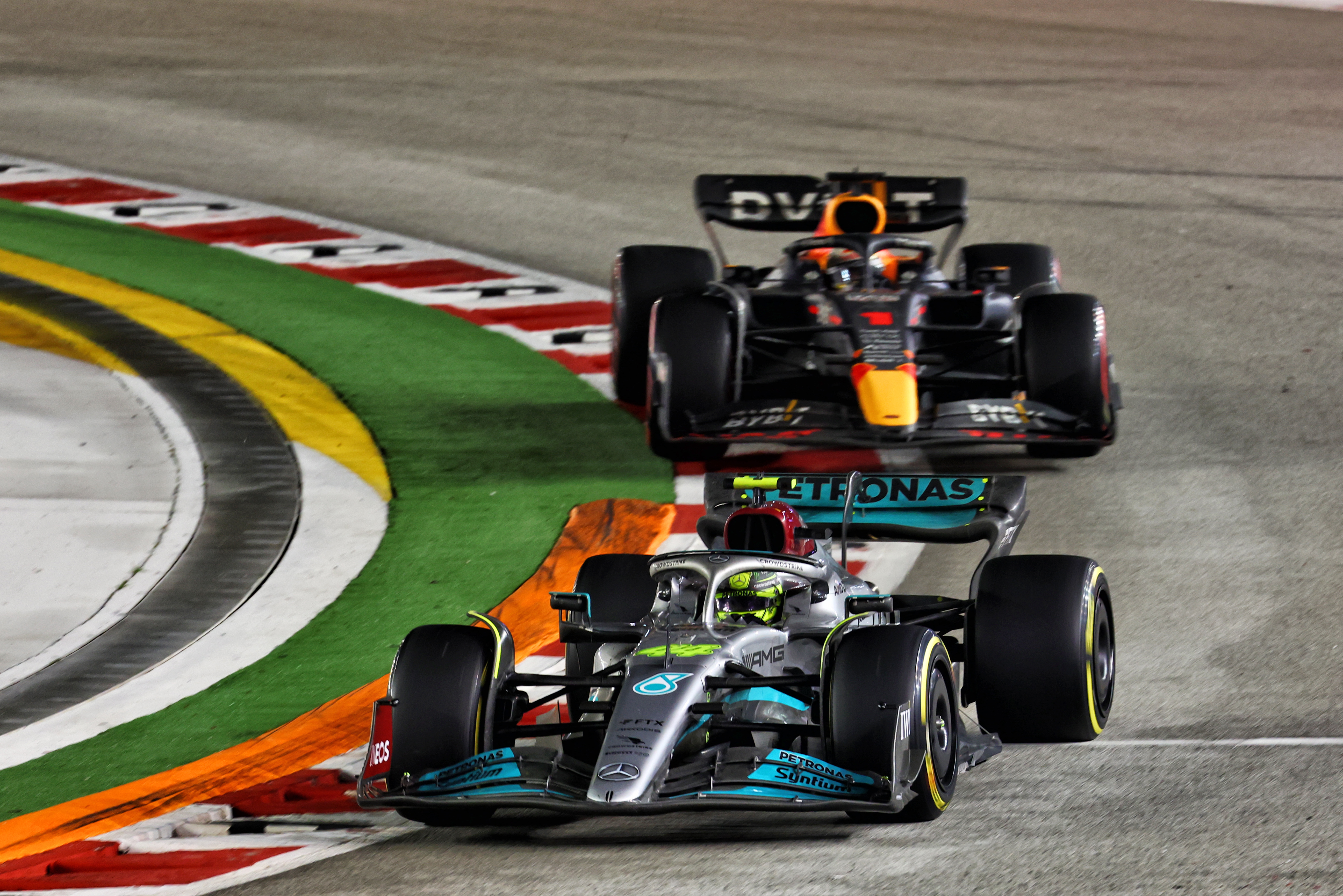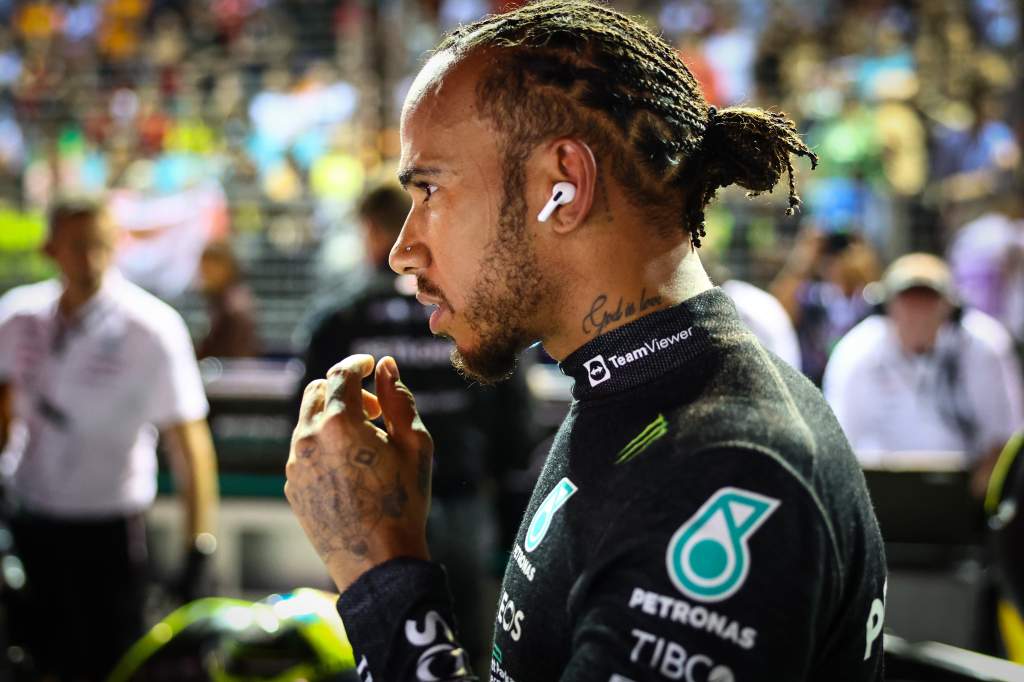Up Next

Lewis Hamilton complained about his Mercedes team’s tyre choice in the early stages of the Singapore Grand Prix, saying over the radio that “I told you about these tyres, in the future you need to listen to me, no grip”.
But it didn’t become clear until he explained after the race what he was unhappy with.
Hamilton started the race on intermediates, as did the rest of the field, but his complaint wasn’t about the type of tyre.
Instead, it was the fact he started on a fresh set of intermediates, rather than the scrubbed set he felt would have worked better based on the warm-up characteristics and feeling during his pre-race reconnaissance laps.
Ultimately, the tyre choice had little impact given his race subsequently unravelled after he went off at Turn 7 and sustained front-wing damage.
But Hamilton felt that he’d have had a stronger start to the race had he had his way and started on used inters before switching to soft tyres when the track was dry enough for slicks. Instead, he took mediums when he did make his pitstop.

“I wanted to start with scrubbed, and then I wanted to go to soft,” said Hamilton. But it didn’t really make any difference.
“I did laps to the grid on the scrubbed inter and it was better. Then we put the [new] inter on and it was terrible, it took several laps for the temperatures to come up,” said Hamilton.
“We can’t fire our tyres up as quick as the others for some reason, on slicks or wets. And we don’t really understand why.
“There’s something going on there in terms of temperatures, because on a long run in the dry we’ve got good longevity.”
The tendency to take time to build tyre temperatures is a long-term characteristic of Mercedes F1 cars, which is partly a consequence of the effort made to ensure the Pirellis last well on long-stints. This has often been a particular challenge in wet conditions.
The team overruled Hamilton’s requests for several reasons. These included the fact that the set of used intermediates in the best condition had already completed a full run in qualifying, the expected advantage of the new tyres off the line and the pace difference between new and used inters of around 1.5s.
As a result, it was felt this would be the better tyre for the early stages of the race and across the duration of the stint. The medium was also felt to be a better race tyre than the soft, hence the decision to put Hamilton onto the yellow-sidewalled rubber rather than softs.

Hamilton was a podium threat in the race despite his early tyre frustrations, running third in the first stint behind the struggling Carlos Sainz. He felt he could have stayed with leaders Sergio Perez and Charles Leclerc had he been ahead of Sainz.
“[I had] kind of a difficult start and then got stuck behind Carlos, I don’t know why he was so slow,” said Hamilton.
“Obviously, I was not quick enough to get past him in these conditions and was just sitting behind him.
“I could do similar times to the guys ahead, but because I was stuck behind him I couldn’t [show it]. I think if I was in third, I would have kept with the guys up ahead.
Hamilton’s hope was that he might be able to jump ahead in the transition period from intermediates to slicks, although that plan was harpooned when he hit the wall on lap 33 – an accident Hamilton accepted the responsibility for, apologising to the team over the radio.
“I knew it was all over from then, but these things happen,” said Hamilton. “I’m not going to punish myself for a mistake.
“It was very tricky conditions for everyone and I think the problems that we have with this car are magnified in the rain. It’s a very, very hard car to drive in the rain.
“For the first couple of corners, it [after the crash] it felt normal, but then sparks started to come off it [the wing]. Then it just failed.”
Hamilton had another moment later in the race while attempting to pass Sebastian Vettel’s Aston Martin for seventh, going deep at Turn 8 while on a damp part of the track. This allowed Verstappen to jump ahead.





